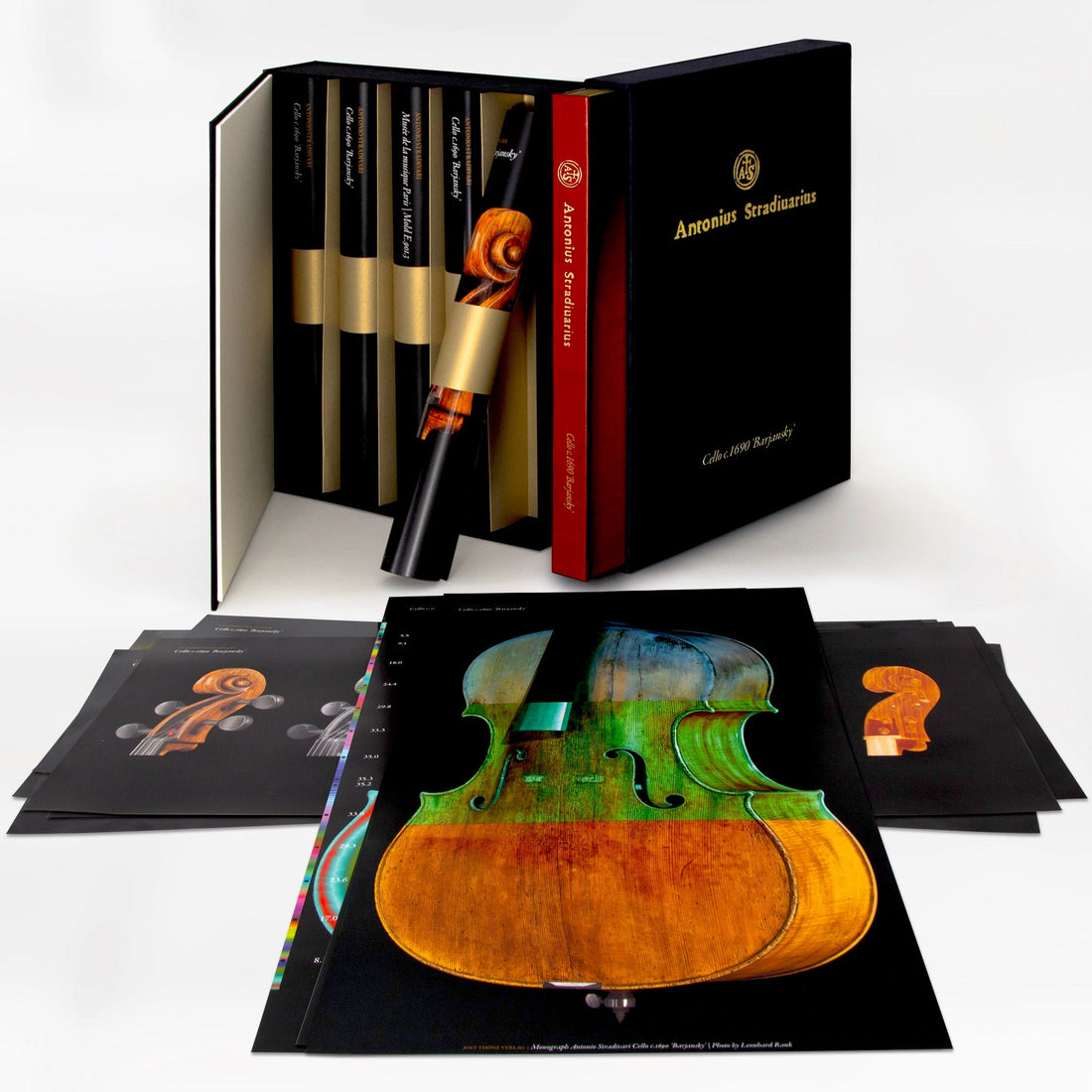A review by "Das Orchester", issue 12/2021:
With its eight-volume comprehensive presentation of all of Antonio Stradivari's string instruments, the Jost Thöne publishing house set the bar high for the quality of new publications on violin making a few years ago. The most recent monographic publication follows on from this documentation, but now goes into greater depth by devoting itself from all conceivable historical and instrument-making perspectives to a single Stradivari instrument, namely the “Barjansky” cello, built around 1690.
To this end, the Alago Family Foundation, which has owned the cello since 2019, has commissioned scientific studies whose breadth and quality eclipse anything that has previously been used to research a single instrument. As extraordinary as this project is in its entirety, the magnificent and visually stunning presentation of the results in English is also unique. Primarily historically oriented essays deal with the question of what role Stradivarius generally plays in the history of the development of the cello, provide insights into the circle of his customers or reconstruct the changing ownership of the “Barjansky” from its creation to the present.
Further articles are dedicated to the instrument from the perspective of violin making. Particularly instructive are the explanations of the changes made by an unknown hand that led to the “Barjansky” being reduced in size, supported by numerous illustrations, graphics and comparisons with the “Mediceo” cello built in 1690. A comprehensive report on the “Barjansky” restoration also provides unprecedented insights into the inner workings of the instrument.

The scientific investigations, in turn, record the finest structural details - for example using 3D computer tomography and digital measurement -, provide information about the finish and its changes using ultraviolet and infrared fluorescence photography, or use dendrochronological methods to narrow down the origin of the types of wood used. In addition, aspects such as the shape of the instrument, which is not strictly symmetrical but rather “biological”, or the question of the tonal impact of modern stringing are also discussed.
From the high-quality paper to the abundance of photographs that show the instrument and its components from every conceivable angle, this volume proves to be an extremely sensual affair. The fact that this is not a completed project, but rather a field that remains open, can be seen from the note that in the future new findings on “Barjansky” will be added to the publisher's website, where it is already in an area accessible to buyers High-resolution 3D visualizations of the cello are saved.

Find a 10-minute commented flipbook video on this new monograph on the product page.
